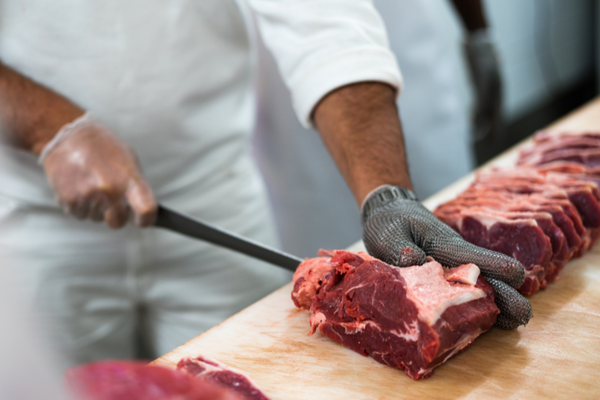What is a Boning Knife and What is it Used For?

Often confused with filet knives, boning knives have a variety of practical uses and are an essential part of any chef’s knife set. Here we’ll explain the nature of boning knives, why their shape is important, how to care for your knife, and their various uses.
What Is A Boning Knife?
A boning knife is a long, thin blade used to remove raw or cooked meat or fish from the bone. These knives are flexible and capable of making very precise cuts. The overall construction of a boning knife is sturdy but has enough give to guide the knife around bones, while the pointed tip allows for easy piercing. Blades of stainless steel or high carbon steel are standard.
The best boning knife depends on the fish or meat you wish to debone:
- A curved boning knife makes long, clean strokes. Use a curved boning knife to remove fish skin or for small fileting jobs where you maneuver the blade through small spaces.
- A straight boning knife removes large cuts or slices of meat.
- Flexible boning knives allow the blade to cut around different shapes and lighter corners.
- Stiff boning knives handle thick cuts of meat such as beef, pork, and larger saltwater fish.
- A thin boning knife causes less damage to delicate meats as the blade generates less resistance.
What Is A Boning Knife Used For?
Boning knives are used to separate meat from bones, remove skin from the meat, and cut through ligaments and connective tissue. Some chefs find other uses for boning knives, such as coring and carving fruit, but the primary purpose of a boning knife is to debone or cut meat.
Boning Knife vs. Filet Knife
A filet knife is a boning knife designed to work with delicate meats. The blade of a filet knife is thinner than most boning knives, and averages five to nine inches in length. The thin, flexible blade of a filet knife lends itself to descaling, skinning, and deboning small fish.
How To Use A Boning Knife
As with any knife, proper usage is essential to prevent injury.
To hold a boning knife correctly, always use your dominant hand. Use a firm grip with your index finger firmly on the top of the blade to stabilize it as you cut. Use your other hand to hold the meat in place.
Always move the knife away from you to reduce the risk of injury. The blade’s flexibility can take some getting used to.
Slicing with a Boning Knife
- To slice with a boning knife, make sawing motions with the entire blade.
Deboning Meat
- Lay the meat on your cutting board and identify the bone location. You may need to remove a layer of fat or skin to find the bone.
- Run the tip of the knife along the outline of the bone to make a shallow incision in the meat.
- Insert the blade into the incision and use a sawing motion to separate the meat from the bone. The force you put on the blade depends on the toughness or delicacy of the meat.
Removing Skin from Meat
- Identify where the layer of skin starts.
- Use the tip of the knife to make a small incision close to the meat.
- Cut out a small, one to two-inch flap of skin.
- Holding the flap of skin, run the length of the blade through it, until the skin separates from the meat. As the skin hugs the meat closely, you must angle the boning knife as the skin curves.
Removing Skin from Fish
- Using a flexible filet knife, make a small incision between the skin and the fish flesh.
- Hold the flesh you separated from the skin with your free hand, and continue to cut away the skin, using smooth cutting motions. Go slowly since fish are delicate.
How To Care For A Boning Knife
The best boning knife is only as good as the care you give it. Clean and dry your boning knives by hand immediately after use. Don’t soak your boning knife since doing so can warp the knife's handle.
Sharpen your boning knives regularly. Cutting ligaments, connective tissue, and tougher meats dulls a boning knife quickly. A dull knife will rip meat rather than slice it, requiring more force to cut. More pressure increases the risk of losing control of the knife and cutting yourself.
Explore Boning Knives With Chefs’ Toys
A high-quality boning knife provides years of use and is a versatile addition to your kitchen knife collection. Stock your commercial kitchen with various boning knives, so you’re ready to debone any meat or fish.




















